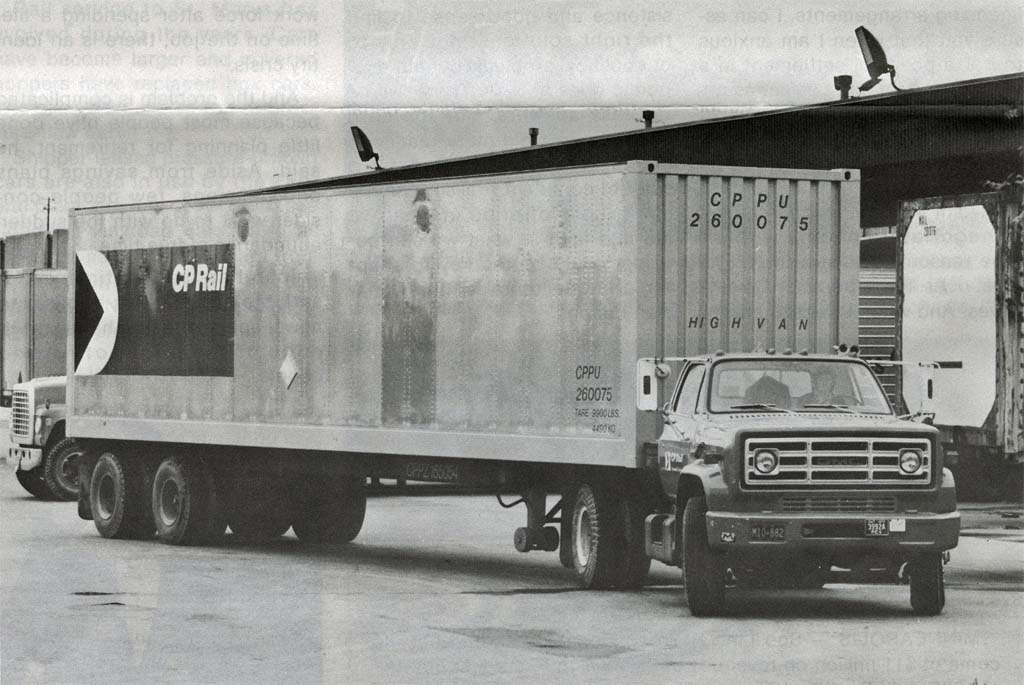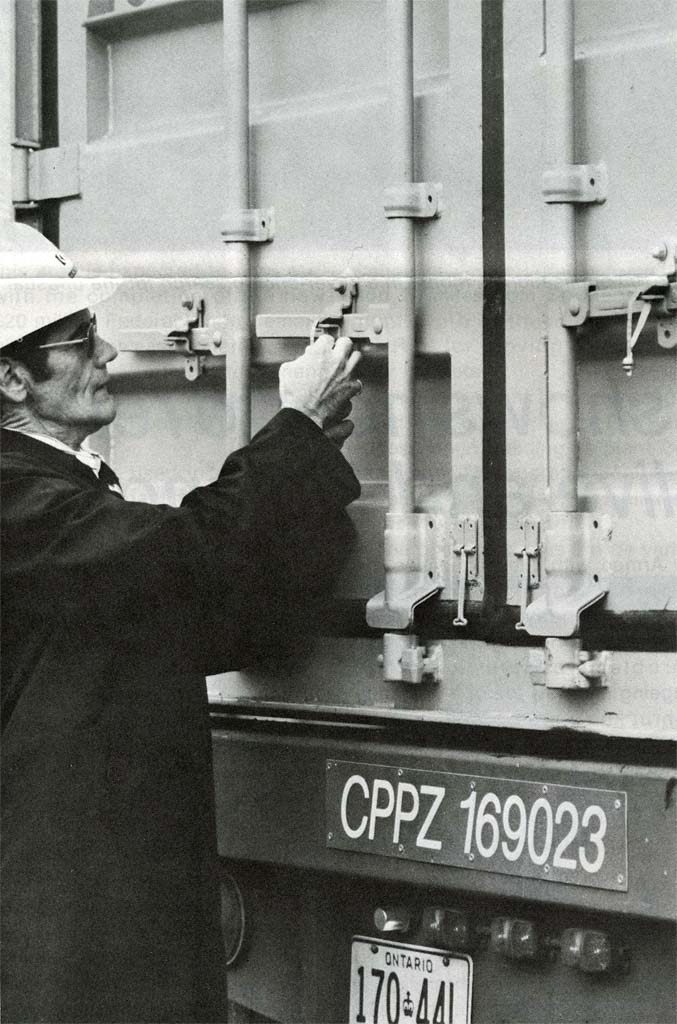
Number 6
May 14, 1980
Kick Off Railway's Phase II

Launching the second phase of its domestic container program, CP Rail has ordered 525 containers, 175 cars with cusioned couplers, and three container handlers at a total cost of some $20 million.
The new containers will eventually replace trailers in domestic shipments, particularly in high-density areas, said Ralph Teoli, general manager, intermodal services.
"Containers have certain built-in advantages," Mr. Teoli said. "For example, they take up less space on trains and in terminals.
They fit easily and ride securely on flatcars.
"And because of reduced air drag, lighter weights and increased train capacity, we get more miles per gallon of fuel."
Mr. Teoli said in a mile-long train which normally would carry 92 trailers, 114 containers could be handled, a 24 percent increase in capacity. Along with this advantage, the train weighs over 14 percent less and has 20 to 40 percent less wind resistance because containers sit lower than trailers.

"Containers also produce capital savings when compared to piggybacks," Mr. Teoli said. "Our studies show that the capital investment required to provide a given handling capacity is significantly less with containers than with trailer systems.
"The fewer elements you have, the less likelihood there is something will go wrong. Our new container system requires fewer rail cars, which means fewer couplers, wheels, axles, brakes, and the like," Mr. Teoli said.
"Container flatcars don't need damage-prone hitches or aprons, and because of our container-to-chassis ratio, we expect reductions in the overall cost of repairs to highway running gear."
The 44-foot, three-inch length of the new containers results in a loss of volume which Mr. Teoli calls "hardly noticeable," compared with the 45-foot highway trailers.
PROTECTION
A rubber seal around the doors protects the interior from moisture, and the doors are extra-strong, with four lock rods and cams, all of which can be sealed. Plywood, logistics tracks, and square-load restraining bars line the interior of the containers, including the ceilings.
To aid visibility, two porthole windows are placed on each side of the container.
Some of the chassis ordered by CP Rail will see double duty. These are the so-called "trombone" or telescopic chassis, which can be closed to carry the standard 40 foot marine container or stretched to accommodate the new size of 44 feet, 3 inches.
Another "stretch" feature of the new service involves the new container handlers. They, too, can spread to 44 feet, 3 inches, then close to pick up a standard 40 footer.
"Not only that," said Mr. Teoli, "but they can close to 29 feet, 5 inches, then once more to 20 feet. In other words, they can lift any container size we might have in our terminals. And, by the end of this year, we will have some containers measuring 29 feet, 5 inches.
"They are designed to compete with the highway "pup" trailer. As for the rail cars, they have been designed to carry all container sizes now in service or planned for the future."
Since domestic containers dovetail so well with the existing marine container system, CP Rail foresees big savings. "We'll save on terminal land requirements, real estate is expensive, and we'll save due to efficiencies resulting from larger-scale use of interchangeable handling equipment, chassis and cars," said Mr. Teoli.
In the future, Mr. Teoli sees the introduction of a whole range of domestic containers, stake-and-rack (now being tested in prototype), heated, refrigerated, as well as others capable of carrying liquid or dry bulk.
"After all," he said, "what we've got now is only a beginning."
Phase II of the domestic container program adds service to Regina, Winnipeg, and Lethbridge, as well as expanding service to the Phase I cities of Montreal, Toronto, Edmonton, Calgary, and Vancouver.
 and is reprinted here with their permission.
All photographs, logos, and trademarks are the property of the Canadian Pacific Railway Company.
and is reprinted here with their permission.
All photographs, logos, and trademarks are the property of the Canadian Pacific Railway Company.